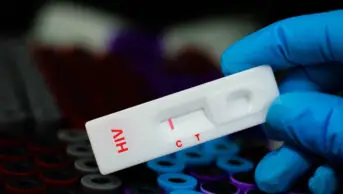As a pharmacist who researches suicide, I am in a unique position; a realisation I made from attending the 26th World Congress of the International Association for Suicide Prevention (IASP) (16–20 June 2015) and the launch of the National Confidential Inquiry into Suicide and Homicide (NCISH) (22 July 2015). As a profession, I suspect we know surprisingly little about this complex issue.
Statistics
Suicide is as a global public health issue. Each year, 800,000 people worldwide,[1]
and an average 4,477 people in the UK alone, die by suicide and approximately 20 times more attempt suicide[1]
[2]
. In most countries, men are more likely to die by suicide than are women. However, more women attempt suicide than men.
Since 2006, rates of suicide have risen in males, particularly in those aged 45–54. Of great concern is the subgroup of 45–54 year old males who have been in contact with mental health services in the previous year, where a 73% increase was observed between 2006 and 2013. Economic pressures — in particular, unemployment — and alcohol use are suggested to have contributed to this concerning increase[2]
. Pharmacists in secondary and primary care may be involved in the care of this group.
Incidence of suicide is directly affected by access to suicide means[1]
and this must be borne in mind for those involved in supply of medicines. For example, a reduction in the number of paracetamol-related poisonings was apparent post-1998 when the availability of paracetamol was restricted [3]
. Opioids are now the most commonly used medicines in overdose in people with mental illness who have been in contact with specialist services in the past year (in 2013, 141 deaths were due to opioids). Almost half of these involved opioids prescribed to the individual or someone in the household and the NCISH advocates the need for pharmacists to monitor safe prescribing[2]
.
Risk factors
There are various factors which influence an individual’s risk of suicide. A previous suicide attempt is the single biggest risk factor for suicide [4]
and suffering almost any mental illness significantly increases risk of suicide compared with individuals with no mental illness. People with bipolar disorder have an 18-fold increased risk of suicide compared with those without mental illness and individuals with depression have a 13-fold increased risk of suicide [5]
. Additionally, certain physical illnesses have been associated with increased risk of suicide[5]
[6]
, some of which is explained by co-morbid depression[6]
.
Somewhat paradoxically, some medicines used to treat mental and physical illnesses have been associated with suicide risk. In 2008, regulatory authorities updated mandatory warnings on all antidepressant labels that suicidal thoughts and behaviours could occur on medicine initiation. This warning was based on a review of evidence by the US Food and Drugs Administration, which concluded that an increase in suicidal thoughts is possible when selective serotonin reuptake inhibitor (SSRI) and other antidepressants are used in individuals under the age of 25, although a protective effect was detected in those over 30 years of age [7]
. Any suggestion of suicidal thoughts potentially induced by medicines must be balanced against the elevated risk associated with non-treatment of the condition. An awareness of the risk associated with the underlying illness is essential during any consultation with patients, including medicines use reviews (MURs), and will be required if the new medicine service (NMS) is extended to antidepressants.
It is difficult to establish if certain medicines are associated with suicide risk. Clinical trials often are under-powered to detect rare outcomes such as suicide. Therefore other measures are used as a proxy for suicide. Spontaneous reporting, such as via the Yellow Card system, is imperative and can inform additional monitoring and population-based observational studies. In our day-to-day practice, we must be alert to factors which contribute to an individual’s suicide risk encompassing social, medical and personal contexts.
References
[1]
World Health Organization. Preventing suicide: A global imperative.
[2]
The National Confidential Inquiry into Suicide and Homicide by People with Mental Illness. Annual Report 2015: England, Northern Ireland, Scotland and Wales. July 2015: The University of Manchester.
[3]
Hawton K, Bergen H, Simkin S, et al. Long term effect of reduced pack sizes of paracetamol on poisoning deaths and liver transplant activity in England and Wales: interrupted time series analyses. BMJ 2013;346:f403.
[4]
Hawton K, Van Heeringen K. Suicide. Lancet 2009;373:1372-81.
[5]
Singhal A, Ross J, Seminog O, et al. Risk of self-harm and suicide in people with specific psychiatric and physical disorders: comparisons between disorders using English national record linkage. J R Soc Med 2014;107:194-204.
[6]
Webb RT, Kontopantelis E, Doran T, et al. Suicide risk in primary care patients with major physical diseases. Arch Gen Psychiatry 2012;69:256-64.
[7]
Pharmacovigilance Working Party. Antidepressants and suicidal thoughts and behaviour, 2008: European Medicines Agency.
The views expressed are those of the author and not necessarily those of the NHS, the NIHR or the Department of Health.

